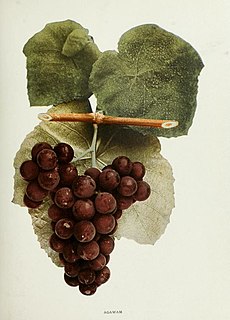 W
WAgawam is a hybrid grape variety. It is a crossing of Carter and Muscat Hamburg. Agawam is one of the so-called Rogers' Hybrids created by E.S. Rogers in the early-to-mid-19th century, and is unique among the named cultivars of that group in that it is self-fertile.
 W
WAlfrocheiro Preto is a red Portuguese wine grape variety planted primarily in the Dão DOC and Alentejano VR. The grape is known for the deep coloring it can add to wine blends. Under the name Baboso negro, it is considered a minor Spanish red grape variety, growing mainly in the provinces of Zamora and Salamanca, in the region of Castile and León. It is one of the authorized varieties of the La Gomera and El Hierro Denominación de Origen, in the Canary Islands (Spain).
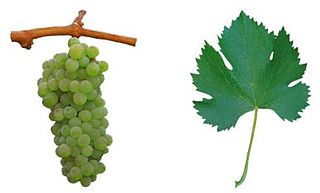 W
WAntão Vaz is a native Portuguese white wine grape variety. Genetic testing has shown it to be a cross of the white Cayetana blanca and the almost unknown red João Domingos, which is thought to be extinct in its native Portugal. It is grown primarily in the Alentejo region, with additional plantings around Lisbon and in the Península de Setúbal. It is vigorous and productive, and requires a hot climate. The thick skins on these large loosely packed grapes enable them to withstand high heat and dehydration. It produces complex, light yellow wines with citrus and tropical aromas. Depending on the time of harvest, the wines can range from very acidic to ripe and alcoholic.
 W
WAthiri or Athiri Aspro is a white Greek wine grape used to make Retsina on the island of Rhodes.
 W
WBusuioacă de Bohotin is a grape which originates from the Bohotin region, in Southeast Iași County, Romania, and is also cultivated in other small areas: Huși in Vaslui County, Pietroasele in Buzău County and Tohani in Prahova County, on a total area of no more than 100 ha.
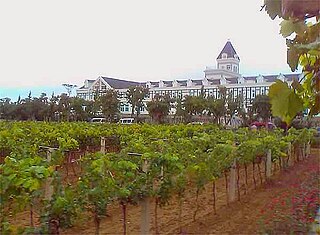 W
WCabernet Gernischt is the name given to a red wine grape variety used in China. Originally believed to be of European origin, and similar if not identical to Cabernet Franc, Cabernet Gernischt has since been proven to be genetically identical to Carménère.
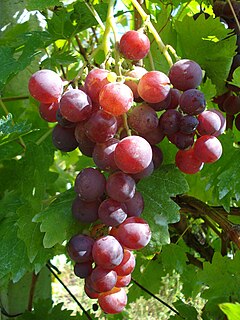 W
WCardinal is a table grape variety first produced in California in 1939.
 W
WCastelão, in Portugal also known as Periquita and João de Santarém, is a red wine grape found primarily in the south coastal regions but is grown all over Portugal and is sometimes used in Port wine production. The name is derived from the Portuguese term for parakeet.
 W
WChenel is a white South African wine grape variety that was produced by a crossing of Chenin blanc and Trebbiano. The variety was produced in the late 20th century for viticultural purposes and its resistance to various grape rots.
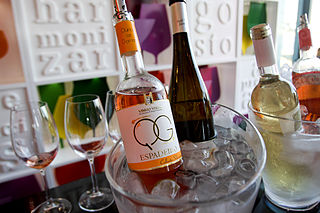 W
WEspadeiro is a red Portuguese wine grape planted primarily in the Minho region for making Vinho Verde. It is also grown across the border, in Galicia (Spain) where it is used to make light bodied wines.
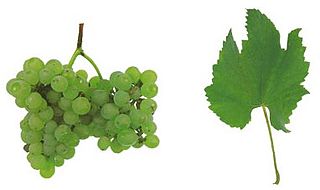 W
WFernão Pires is a white Portuguese wine grape grown throughout Portugal, especially in the Tejo and Bairrada, where it is also known as "Maria Gomes". This variety is known to produce wines with a spicy aromatic character, though often with delicate exotic fruity notes. Generally not expected to be a long-living wine, this wine is best drunk in its infancy or matured for up to 2 or 3 years. Outside of Portugal there are some significant plantings in South Africa.
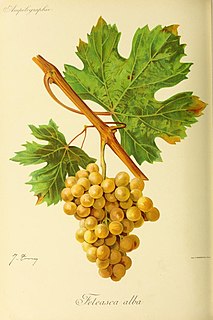 W
WFetească Albă is a Romanian - Moldovan white grape variety, mainly cultivated in the regions of Moldova and Transylvania in Romania and Republic of Moldova, as well as in the Hungarian wine region of Eger.
 W
WFetească Neagră ; English: Black Maiden) is an old pre-phylloxeric variety of Romanian - Moldovan grape, cultivated mainly in several areas in the Romanian regions of Moldavia, Muntenia, Oltenia, Banat, Northern Dobruja and also in the Republic of Moldova.
 W
WFetească Regală is a white grape variety, created in the 1930s, in Mureș County, Romania. It is a natural crossing of Grasă and Fetească albă.
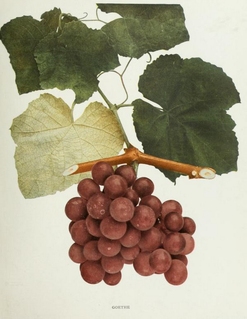 W
WGoethe is one of the collection of grape varieties known as Rogers' Hybrids, created by E.S. Rogers in the mid-19th century, and is the result of a cross of Carter, a selection of Vitis labrusca, and Black Hamburg, a selection of Vitis vinifera. It was originally known as Rogers No. 1, until Rogers named it after Johann Wolfgang Goethe, the German author, artist, and scientist.
 W
WHebén is a very rare white grape variety grown for wine and table grapes in Spain. It is an ancient variety found to have originated as a table grape in North Africa as Gibi. It is the parent variety of a large number of grapes grown in the Iberian Peninsula and the wider Mediterranean. It has paired with Alfrocheiro to produce the rare Portuguese varieties Trincadeira das pratas, Tinta grossa, Castelão branco, and Malvasia fina, as well as the Spanish Allarén. With Muscat of Alexandria it has produced Moscatel nunes/Nuno gomes in Portugal and Moscatel de Angüés in Spain. In Spain, it has a parent relationship with some very widely grown varieties: Airén, Cayetana, Viura, Xarel·lo, and Pedro Ximénez. In total, around 60 offspring varieties have been identified. Its sparse bunches are an attribute that can be seen some in children varieties such as Pedro Ximénez and Xarello. It produces solely female flowers, unlike the majority of self-pollinating vinifera varieties grown for wine today.
 W
WHerbert is one of the collection of grape varieties known as Rogers' Hybrids, created by E.S. Rogers in the mid-19th century, and is the result of a cross of Carter, a selection of Vitis labrusca, and Black Hamburg, a selection of Vitis vinifera. It was originally known as Rogers No. 44.
 W
WJuhfark is a variety of grape, of the species Vitis vinifera. The name in Hungarian literally means sheep's tail. The term refers to the elongated, cylindrical shape of the clusters.
 W
WJuwel is a white German wine grape variety that was produced in the mid-20th century as a crossing between Kerner and Silvaner. By the end of the 20th century, only around 30 hectares of the grapes were still in production, mostly found in the Rheinhessen.
 W
WKanzler is a white German wine grape variety that was produced in the city of Alzey as a crossing of Müller-Thurgau and Silvaner. Today it is primarily grown in the Rheinhessen where it is valued for the high must weights that the grapes can achieve. However, the grape is very sensitive to terroir and vineyard site selection with a tendency to produce very low yields in unfavorable locations.
 W
WKéknyelű is a white Hungarian wine grape planted primarily in the Badacsony wine region near Lake Balaton. The grape produces full bodied, smokey wines.
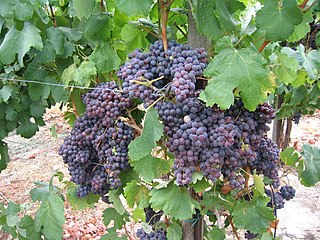 W
WKotsifali is a red Greek wine grape that is indigenous to the island of Crete. It is mainly grown in the Heraklion regional unit and sporadically on the Cyclades. The grape alone gives moderately red wine with high alcohol content and rich flavor. It is often blended with Mandilaria, yielding a ruby-colored dry wine with pleasant taste and aroma that requires minimal aging.
 W
WLa Crescent is a white grape varietal developed by the University of Minnesota's cold hardy grape breeding program. Since its release to the market in 2002 La Crescent has been planted with success in Iowa, Kansas, Minnesota, Missouri, Montana, Nebraska, New Hampshire, New York, Ohio, Oregon, Vermont, and Wisconsin. Per the licensing application the variety is cold-hardy to −36 °F (−38 °C) and per the patent application wines produced will feature desirable aromas of citrus, apricot, pineapple, and muscat and lacks ‘foxy’ aromas associated with V. labrusca and herbaceous aromas associated with V. riparia.
 W
WLoureira, Loureiro or Loureiro Blanco is a white wine grape cultivated in the northwest of the Iberian Peninsula. This includes Galicia, Spain and Minho, Portugal. In the latter, it is notably cultivated along the Lima River, a sub-region of Vinho Verde.
 W
WMarquette is an inter-species hybrid red wine grape variety. It was developed at the University of Minnesota, and is a cross between two other hybrids, MN 1094 and Ravat 262. Marquette was introduced in 2006.
 W
WMassasoit is one of the collection of hybrid grape varieties known as Rogers' Hybrids, created by E.S. Rogers in the mid-19th century, and is the result of a cross of Carter, a selection of Vitis labrusca, and Black Hamburg, a selection of Vitis vinifera. It was originally known as Rogers No. 3, but 1869 Rogers named it after a prominent Native American chief from early Massachusetts history, Ousamequin, who used the title Massasoit.
 W
WMoschofilero is an aromatic white grape of Greek origins with a pink/purple skin and quite spicy flavor with good acidity. Grown throughout much of Greece and primarily in Peloponnese where it is traditionally used to make a dry and bold wine with much spice and perfume. It is characterized by a "rose garden' bouquet and is usually paired with fresh fruit or fruit-based desserts. It makes still, sparkling, and dessert wines, and can have characteristics similar to the Muscat. It ripens late and can have problems with hot weather. It is the grape required to make the "Mantineia" PDO blanc de gris wines.
 W
WMtsvane or Mtsvane Kakhuri is a grape variety used to make Georgian wines. It is used to make white wine. It was so named to refer to the yellowish-green colouring of the ripened berries. It is often blended with Rkatsiteli to create a fruity, aromatic wine. In the Georgian language the word mtsvane means new, young and green.
 W
WNerello is a name given to two varieties of red wine grapes that are grown primarily in Sicily and Sardinia.Nerello Mascalese, which is named after the Mascali area in Catania where the grape is thought to have originated. It is grown mainly on the northeastern side of Sicily and is thought to be superior in quality to the Nerello Cappuccio. While it can be used for blending, the grape is often made into varietal wine. The grape is believed to be an offspring of the Calabrian wine grape Mantonico bianco. Nerello Cappuccio It is widely used in the Etna Rosso DOC as a blending grape that adds color and alcohol to the wine. It is one of the three grapes used to make the wine Corvo Rosso.
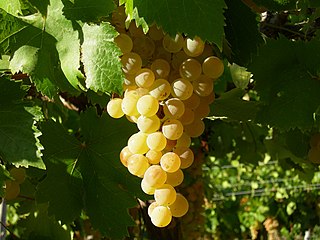 W
WPedro Giménez is a white Argentine wine grape that is rapidly declining in plantings. Despite the similar name, the Spanish wine grape Pedro Ximénez is a different variety with ampelographers not yet certain if the two grapes are in any way related. Grown predominantly in the Mendoza wine region, Pedro Giménez makes simple wines similar to those made from Cereza and Criolla Grande. There are some plantings in Chile where it is a minor grape in pisco production.
 W
WPiedirosso is a red Italian wine grape variety that is planted primarily in the Campania region. The grape is considered a specialty of the region, being used to produce wines for local and tourist consumption. Its name "piedirosso" means "red feet" that reflects the bottom of the vine which used to be red similar to the red feet of a pigeon.
 W
WPigato is a white Italian wine grape planted primarily in Liguria. The grape is found in the Riviera di Ponente zone in Italy's region of Liguria which makes sturdy, aromatic wines with plenty of fruit. DNA evidence proves that Pigato, Vermentino and Favorita are the same variety. All sorts of theories exist about its origins: it could be Greek, or brought by the Romans from central Italy, or be related to Arneis or Vermentino; it is often confused with the latter. It gains its name, which means "spotted" from the appearance of the ripe grapes.
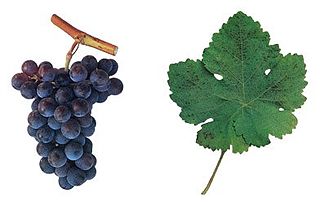 W
WRamisco is a red Portuguese wine grape variety that is planted primarily in the Colares DOC. As a varietal, Ramisco produces very tannic and astringent wines.
 W
WRieslaner is a breed cross of the Silvaner and Riesling grape that was first bred in Veitshöcheim, Franconia, Germany in 1921 by the grape breeder August Ziegler. It is a late ripening grape that is fairly high in acidity. Today it is mostly grown in the Franconia (Franken) region and in the Palatinate (Pfalz) region where the grape is often affected by botrytis. Rieslaner is bred to do well with botrytis, and it holds a lot of potential to form an acidic, fruity, and full yield when it is ripened.
 W
WSchönburger, also spelled Schoenburger, or Schonburger is a variety of grape, formally designated Geisenheim 15-114, a crossing developed at Geisenheim Institute for Grape Breeding in Germany, and released in 1979, of Pinot noir x.
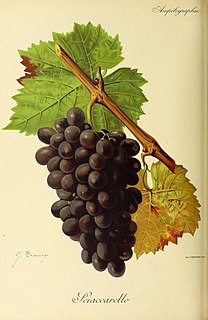 W
WSciacarello is a red Italian wine grape variety that is grown primarily in Corsica. It is most noted for the wines that come from Ajaccio which tend to be highly perfumed. It is also associated with wines from Calvi, and in the Sartène region around Propriano. The grape is normally blended and rarely made into a varietal wine. Sciacarello is believed to be a parent vine of the Ligurian-Tuscan wine grape, pollera nera. Di Vecchi Staraz, Bandinelli, Boselli, This, Boursiquot, Laucou, Lacombe, and Varès (2007) showed that Sciaccarello and another Corsican variety Malvasia Montanaccio as well as Tuscan varieties Biancone, Caloria, Colombana Nera, and Pollera Nera have genetic ties to Mammolo.
 W
WSercial is the name of a white grape grown in Portugal, especially on the island of Madeira. It has given name to the dryest of the four classic varieties of Madeira fortified wine.
 W
WSouzão is a Portuguese wine grape that is used in the production of port wine.
 W
WTinta Amarela or Trincadeira is a red wine grape that is commonly used in Port wine production. The grape is noted for its dark coloring. Its use in the Douro region has been increasing in recent years. The vine is susceptible to rot and performs better in dry, hot climates.
 W
WTinta Barroca is a Portuguese red wine grape that is grown primarily in the Douro region with some plantings in South Africa. In Portugal, it is a common blending grape in Port wine while in South Africa it is normally made into a varietal wine or blend with other grapes. The vine was introduced to the Douro region in the late 19th century and has the advantages of being able to withstand cool conditions while planted on north-facing slopes.
 W
WTinta Cão is a red Portuguese wine grape variety that has been grown primarily in the Douro region since the sixteenth century. The vine produces very low yields which has led it close to extinction despite the high quality of wine that it can produce. Improvements in bilateral cordon training and experiments at University of California, Davis have helped to sustain the variety. The vine favors cooler climates and can add finesse and complexity to a wine blend.
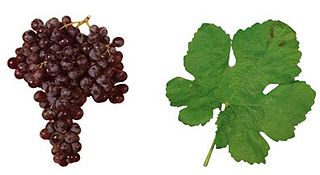 W
WTinta Negra Mole is a red Portuguese wine grape commonly used in the production of Madeira. It is the most widely planted variety on the Madeira islands and is considered the industry's "workhorse grape".
 W
WTraminette is a cross of the French American hybrid Joannes Seyve 23.416 and the German Vitis vinifera cultivar Gewürztraminer made by Herb C. Barrett ca. 1965 at the University of Illinois, Urbana/Champaign. His intention was to produce a large clustered table grape with the flavor of Gewürztraminer. He sent the cross to the New York State Agricultural Experiment Station grape breeding program at Cornell for development when he departed from Illinois. Traminette was found to have excellent wine quality, combined with good productivity, partial resistance to several fungal diseases, and cold hardiness superior to its acclaimed parent, Gewürztraminer, while retaining a similar character.
 W
WVerdejo is a variety of wine grape that has long been grown in the Rueda region of Spain. The grape originated in North Africa, and was spread to Rueda in about the 11th Century, possibly by Mozarabs. Verdejo was generally used to make a strongly oxidized, Sherry-like wine. In the 1970s, the winemaking company Marqués de Riscal began to develop a fresher style of white wine based on Verdejo with the help of French oenologist Émile Peynaud. In 1980, white wines from the Rueda region were recognized by a Denominación de Origen (DO). Wines labeled Rueda must contain 50% Verdejo; the remainder is typically Sauvignon blanc or Macabeo. Wines designated "Rueda Verdejo" must contain 85% Verdejo, and are often 100% Verdejo.
 W
WVignoles is a complex hybrid wine grape variety that was developed by J.F. Ravat originally named Ravat 51. According to Ravat, "Ravat 51" was the result of a cross made in 1930 using the complex hybrid wine grape Seibel 6905 and a clone of Pinot Noir known as Pinot de corton. Originally named "Vignoles" by the Finger Lakes Wine Growers Association in 1970, genetic testing has recently proved that Vignoles does not share any major genetic markers in common with Seibel 6905 or Pinot Noir. Thus, Vignoles is unrelated to the "Ravat 51" grapevine that was imported into the US in 1949 and the parentage of Vignoles is currently unknown.
 W
WViosinho is a white Portuguese wine grape variety that is grown primarily in northern Portugal where it attains high acidity levels. It is primarily found in the Trás-os-Montes and Douro DOCs. It is used primarily as a blending grape where it adds structures and flavor to both still and fortified Port wines.
 W
WWeldra is a white South African wine grape variety that is a crossing of Chenin blanc and Trebbiano. According to wine expert Jancis Robinson, Weldra can maintain good acidity levels through ripening but tends to produce rather neutral tasting wines.
 W
WXinomavro is the principal red wine grape of the uplands of Naousa in the regional unit of Imathia, and around Amyntaio, in Macedonia, Greece. This grape is primarily cultivated in Naousa, Goumenissa, Amyntaio, Rapsani, Trikomo, Siatista, Velventos, and, on a lesser scale, on Mount Athos, at Ossa, Ioannina, Magnesia, Kastoria and Trikala. In 2010, the total global cultivated area was 1,971 hectares and was entirely in Greece, but by 2013 this had grown to 2,239 hectares worldwide, with some initial plantings in Gansu, China.